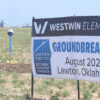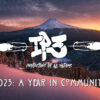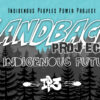This Indigenous Peoples Day, 2021, and in collaboration with Greenpeace, we are excited to present the Indigenous Peoples Day & How To Be A Good Relative Toolkit. Indigenous Peoples Day is a time to remember, learn, celebrate, and make commitments for change and direct action. Please find the toolkit and additional resources at: https://www.greenpeace.org/usa/toolkits/indigenous-peoples-day-how-to-be-a-good-relative
Indigenous Peoples Day
Indigenous Peoples Day recognizes Indigenous Peoples as the original inhabitants of the Americas and directly replaces Columbus Day, changing a celebration of colonialism into an opportunity to reveal historical truths about the genocide and oppression of Indigenous Peoples in the Americas. This acknowledgement is important on many levels including affirming historical accuracy, recognizing treaty rights and Indigenous sovereignty, rewriting historical wrongs, organizing against current injustices, and celebrating Indigenous resistance.
The idea of replacing Columbus Day with Indigenous Peoples Day was brought about in 1977, at a United Nations sponsored conference in Geneva, Switzerland. Fourteen years later, activists in Berkeley, CA, convinced the Berkeley City Council to declare October 12 a “Day of Solidarity with Indigenous Peoples.” Since then, there has been a growing movement to change “Columbus Day” to Indigenous Peoples Day all around the country. Fourteen states, the District of Columbia, and more than 130 cities now observe Indigenous Peoples Day instead of or in addition to Columbus Day.
This Indigenous Peoples Day, the Indigenous Peoples Power Project (IP3) is excited to collaborate with Greenpeace USA to bring you this toolkit! You can check out our factsheet at ip3action.org/resources for a quick, one-page view of what we’ll be talking about here, but this toolkit will provide you with in-depth, invaluable information on how to be a good relative. Please feel free to share this toolkit with family, friends, and colleagues, and don’t hesitate to point your Indigenous friends towards us for movement and training support.
Who is Indigenous Peoples Power Project?
Indigenous People’s Power Project (IP3) is a nonviolent direct action training and support network. It was formed in 2004 as a project of the Ruckus Society and received 501c3 status in June of 2020. IP3’s Mission is to provide nonviolent direct-action training, campaign support, and community organizing tools to support Indigenous communities taking action in defense of their homelands. They do this by providing Indigenous-centered curriculum, training, and camps that are customized to the needs of Indigenous communities all over Turtle Island who request support. IP3 is for Indigenous Peoples, by Indigenous Peoples.
Being a good relative every day
1. Know the land you are on
The easiest way to begin understanding local Indigenous communities is to know whose land you are on. You can find out whose traditional territory you are on by visiting native-land.ca and exploring the map. They also have a number of useful resources that can help guide you on your journey of being a better ally.
Once you know whose land you’re on, you can start researching historical events of that tribe/community, how colonization has affected them, and what they are doing today. Usually they will hold some public events through the year that you can attend to make personal connections and learn more.
Once you know whose land you’re on, you can also start giving something that’s called a land acknowledgement. We’ll talk more about that later, in the How to be a good relative in movement spaces section.
2. Support local tribes, groups, and organizations in their work
It’s important to remember that we cannot stop at simply advocating for Indigenous Peoples Day, we must transform systems to ensure the inclusion of Native voices. This begins through the work of advocacy and must include electing officials who care about our communities. As we build on the momentum of activists, we must work to keep elected officials accountable and ensure Native voices, issues, and contributions are a part of key policy making decisions. (via IllumiNative)
3. Learn the local protocols, history, and cultural context
There are over 574 unique federally recognized tribes in what is called the United States, who have their own histories, languages, and cultural practices. There are even more tribes and tribal communities without federal recognition. Protocols may vary. Please learn the land you are on to reflect on the tribal communities that may still have jurisdiction within your so-called state. Below are the states that do recognize Indigenous Peoples Day (or Native American Day):
States that celebrate IPD (or Native American Day)
- Alaska (20.32% Native population)
- Oklahoma (Native American Day) (13.19%)
- New Mexico (10.75%)
- South Dakota (Native American Day) (10.09%)
- Oregon (2.99%)
- Hawai’i
- Iowa
- Louisiana
- Maine
- Michigan
- Minnesota
- Nevada
- North Carolina
- South Dakota
- Vermont
- Wisconsin
- Washington, DC
Know that Indigenous Peoples are not historical footnotes. As Indigenous Peoples, we contribute to economies, communities, and culture, while also having our own Tribal economies, communities, and culture. Expel stereotypes! We are not all alcoholics. We do not all live on reservations. We do not all get “free” money or education or even healthcare from the government. We do not all have casinos and even the Tribes who do have them, not all benefit or make personal income from casinos.
Learn about the generations of historical trauma that many Indigenous Peoples have faced, including colonial genocide, tribal status and proof of blood quantum, and removal from traditional homelands (eg. Trail of Tears, boarding and residential schools, Tribal termination, Relocation Act, Tribal Restoration, forced sterilization, etc.).
4. Listen to and center Indigenous voices
Centering Indigenous voices can be done every day on various platforms, as well as on the ground in movement spaces. Here are some examples we recommend:
- Know whose homelands you are on with at least the federally recognized tribes in your state. Also, know that there are over 200 tribes that are “unrecognized” by the U.S. Government as well.
- On Indigenous homelands – make sure you know who the leadership is and follow Indigenous leadership at all times. At All Times!
- On social media – follow, share and uplift Indigenous media and Indigenous stories.
- Promote Indigenous organizations, stories, and voices in your circles, communities, and businesses.
If you do not understand why centering Indigenous voices is vital while involving yourself in causes that directly affect Native communities, reconsider your presence, fall back, educate yourself, and try again when this understanding is with you.
5. Appreciate, don’t appropriate
Cultural appropriation is when a group or person disrespectfully imitate, or misuse another culture’s regalia, clothing, customs, identity, even language, by believing they have a right to wear, take ownership of, and/or capitalize (profit) off of the culture or people they themselves are not a part of. Cultural appropriation can look like the act of promoting another culture as if it is your own or wearing an item as a costume, with no reference or regard or interest in understanding its origins.
An example of this is the headdress for music festivals or Halloween. Don’t do it. Taking an invested interest in understanding why cultural appropriation is harmful, hurtful, and not ok, will be a good thing for you to consider. If you find yourself in a position where people are telling you that your act of cultural appropriation is harmful, stop and listen.
You can learn about cultural appropriation, and find more resources, here:
- https://www.wernative.org/articles/native-cultural-appropriation
- https://www.instagram.com/p/CDSVNqSlge6/
6. Do no harm (land, community, culture)
Land, community, and culture are not separate. We cannot have one without the other. We recognize and affirm that any harm done to one is harm done to all. Let’s break this down. Harm, by definition, means physical or mental damage.
When we say do no harm, we mean:
- Do no physical harm to the land you are on
- Do no physical harm to the communities you are a guest among
- Do not physically or mentally harm yourself or others. Take care of yourself and take care of the communities you are in. If you do not know how to do this, the best thing you can do is listen. Listen and observe those around you who are showing up in a good way
- Do not participate in cultural appropriation
7. Practice authentic solidarity
We as Indigenous Peoples are excited to have you learn more about who we are, what colonization has done to this land, and how we continue to resist these resounding effects every day. We welcome you to join us in fighting for Indigenous rights and sovereignty, for recognition and decolonization, and the return of lands to Indigenous hands.
However, solidarity should be honest and respectful, not performative. We need people who will do the work, not people who want to pretend they are us, or only show up to post a photo to social media. This toolkit is aimed to help you show up authentically, and the self-assessment below is a great tool to check that you are coming right to Indigenous Peoples.
Being a good relative in movement spaces
1. Know the land you are on.
In the same way you want to be aware whose land you’re living on, if you’re going to an Indigenous movement space, it’s important to know whose land you will be visiting. Oftentimes, you’ll hear people give land acknowledgements, and you may yourself eventually be tasked in doing this.
Why give one? Well, fundamentally it is a way to recognize the lasting and continued impacts of colonization and to bring awareness of the fact that Indigenous Peoples have been and still are today wherever you are. But should you give one? That depends. Do you actually mean it? Why are you personally feeling the need to give one? How are you working to bring the spirit of a land acknowledgement to life? These are important questions, and you should reflect on whether or not giving one is appropriate, or performative.
But what even is a land acknowledgement? The most simple kind of acknowledgement is saying whose traditional territory you live on/are currently on. You may also see (or organize) land acknowledgements that bring in people from those territories to do a welcome, give historical context, and possibly a prayer. If you ask someone to do this, you should be prepared to give them an honorarium or offering to thank them. There’s lots of different ways to do them, and a few key takeaways:
- Do the research to figure out exactly whose land you’re on.
- What is the history that happened here?
- What is going on today with the Indigenous people who are here?
- Make sure you’re pronouncing names correctly.
- Don’t trivialize it! (giggling, saying you “live, work and play on,” and other “lighthearted” comments demeans and disrespects Indigenous Peoples and is an example of perpetuating colonialism)
- Unless you’ve been explicitly invited by the traditional peoples whose territory you’re on, you are not a guest there, so don’t say you are! You are, more than likely, an uninvited settler (this is different for a number of folks, including Black people and refugees)
Land acknowledgments are statements/acknowledgements of the traditional homelands and Tribes of that area have become more and more popular and though well intentioned can become performative if they are not paired with action and commitment. It is one thing to acknowledge whose homelands you directly benefit from and whom you are a guest on, but it’s another to commit to knowing the Tribes in your area, including them in the work you are doing, and uplifting Indigenous Peoples in their work and business.
Finally, take a moment to read through this introduction to Land Acknowledgements. Some key takeaways from the website are below.
- Why is this acknowledgement happening?
- How does this acknowledgement relate to the event or work you are doing?
- What is the history of this territory? What are the impacts of colonialism here?
- What is your relationship to this territory? How did you come to be here?
- What intentions do you have to disrupt and dismantle colonialism beyond this territory acknowledgement?
Many of the questions posed at this website and in this section aren’t necessarily for you to give verbal answers to during every land acknowledgement. Rather, it is you doing the work of actually acknowledging whose land you’re on.
2. Make sure you know who the leadership is and follow Indigenous leadership at all times.
It’s important when entering movement spaces to know that work may seem new and urgent but may have been a long term battle prior to your involvement. Is the leadership coming from the community or is the leadership coming from non-profit organizations? It’s important to know the difference. All healthy trusting relationships do not happen overnight nor are they sustained overnight.
Local Tribal leadership may come from the Tribe itself, Tribal community members, Tribal organizations, or a mix of all. You should make sure you are respecting the work that they have begun and that you are there to help. Establishing and building trust is pivotal. You should not assume that you know the problem or issues, or even the solutions. Indigenous Peoples know what’s best for Indigenous Peoples. Following local Indigenous leadership and centering Indigenous voices demonstrates respect for Treaty rights and Indigenous sovereignty.
3. Make sure you know the ground rules or common values of the camp or action that you are going into and follow those.
It is best to know this before arriving and make arrangements as you arrive to familiarize yourself and/or your group. Check in with yourself and other visitors on why you are there. Are these reasons authentic, and do they align with the needs of Tribal leadership? Know that Indigenous Peoples are fighting for themselves and future generations. This is not a photo op or weekend experience for them. They do not have the luxury and privilege to separate their personal lives from the movement work, as they are one in the same. These actions are often about survival and safety; small wins may not be acceptable knowing the risks their communities may face.
4. Be self-sustaining! Be sure you are able to sustain yourself so that you are not a burden to the people in the community.
Have a worthy plan to arrive and a worthy plan as you and/or your group exists. Share your lessons learned and best practices with other allies alike. Being self-sustaining means having a place to sleep like a tent or shelter, having blankets and/or sleeping bags that are right for all types of weather you may experience. Having the right clothing for any type of weather you may experience. Having a back up plan or off-site support person if something were to go wrong, i.e., vehicle trouble, lost wallet, health emergency. Having enough food and water for yourself, and the means to prepare your food. Yes, Indigenous communities will host and provide accommodations, but that should be seen as a gift and supplement what you are able to bring for yourself.
5. Make sure you are adding to the strength that is already there.
When you arrive at an action, a camp or a movement, show up in a good way. You are a guest. Yes, be self-sustaining and also be prepared to roll up your sleeves and get to work! Whether it’s chopping wood, helping in a kitchen, running errands or making art, be ready to assist where is needed and wherever is asked. Oftentimes, the best you can do as an ally is the work that is not glamorous; be ready to listen and take direction from Indigenous leadership.
6. Seek out additional resources.
It is not the job of any Indigenous person to give you all the answers. There are many, many resources available to you on the internet, and we encourage you to seek that out before arriving in a movement space. Some of these resources are linked at the bottom of this toolkit!
Above all else, the best advice we can give is to listen. In fact, this is a very common traditional teaching in many of our Indigenous cultures, and we encourage you to participate in it as well. Answers are rarely given directly; instead, they are told through stories, songs, experiences, teachings, and spending time together. The more you listen, the more you will understand the answer to any question you may hold.
7. Leave the land better than you found it.
This is knowledge you should already practice everywhere you go.
It’s really simple. Take care of your mother! Get to know the land you are on and connect with the earth. Respect the land. Do not litter, do not desecrate the land, or leave any trash behind. Clean up after yourself and offer to support the communities you enter in clean up. Learn how the communities you visit prefer to do grounds clean up and follow the protocol for the land you are on at all times.
If you are unable to bring offerings to leave with the people, be sure to at the least clean up your own garbage and areas before departing, as well as others! If you see something that needs to be cleaned or picked up off the grounds, be willing to do that clean up. If you have specific skills that can lend themselves to the community and grounds, while you are there, offer them! Give more than you take.
Allyship: a self-assessment
It’s good to constantly reflect on our heart and motives for wanting to be involved in any movement. To do so, ask yourself the following questions:
- Am I being an ally to mask my personal guilt/shame caused by my ancestors’ actions?
- Am I being an ally for personal gain?
- Am I only an ally with certain people?
- Do I romanticize Indigenous Peoples in my allyship?
- Are my behaviors coming from a place of authenticity?
- Are my behaviors coming from a place of avoiding my own pain, or a place of being truthful in who I am?
- Don’t be the cause of more unnecessary harm!
Resources and Organizations to Support
https://www.amnesty.org.au/10-ways-to-be-an-ally-to-indigenous-communities/
https://www.instagram.com/p/CH8h4b4D3bN/
https://www.landbacklandforward.com
https://www.ndncollective.org/









